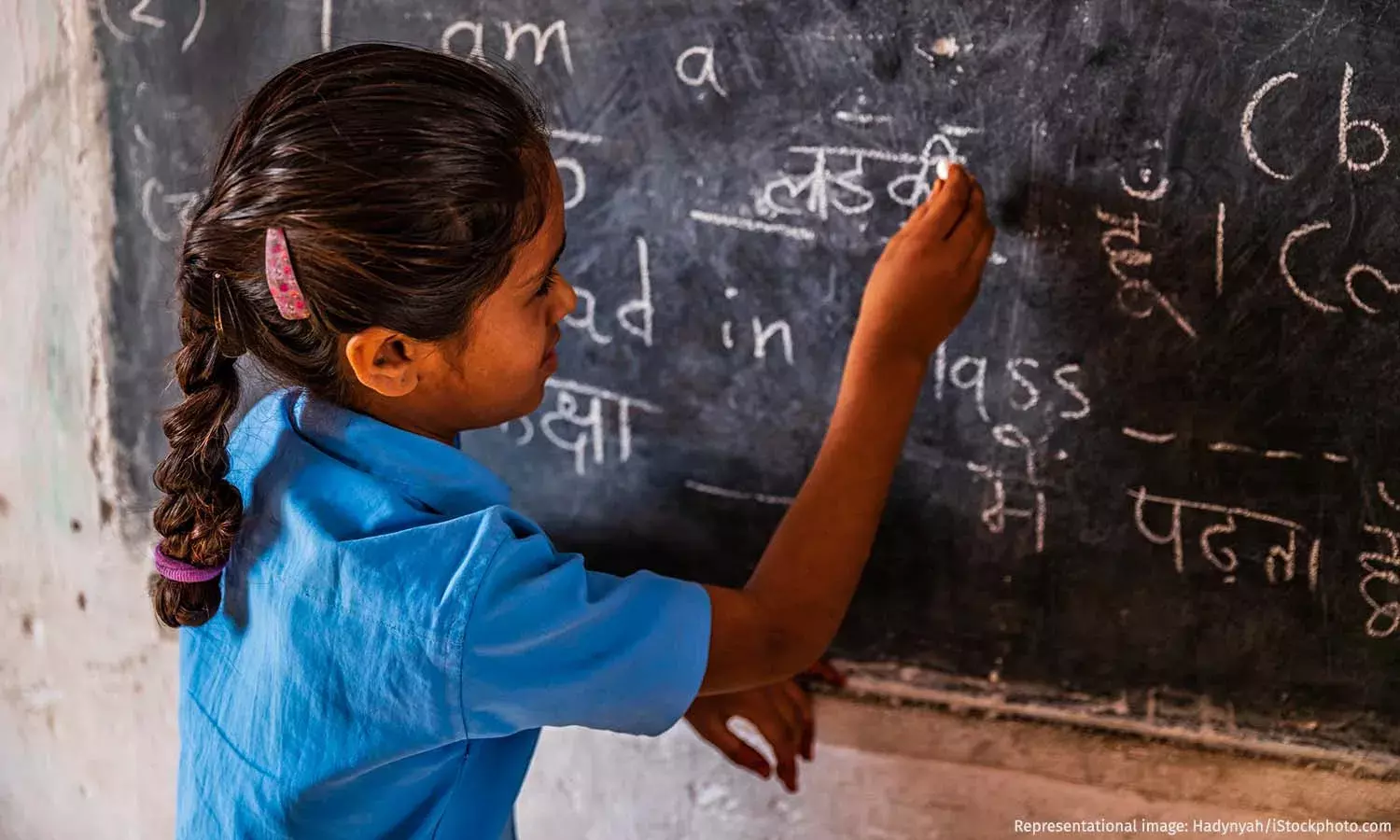#DataViz: Private Schools Show Better Outcomes, But Govt Schools Are Catching Up
Government school enrolment dropped by 8.7 million in a year, yet their Class III reading levels improved by 7 percentage points since 2022

Pune: The gap in learning levels of government and private school students in primary grades is narrowing, an IndiaSpend analysis of publicly available data shows. This is a trend showing up both in reading and arithmetic for grade III students.
One in four grade III students in government schools could read at a grade II level, up from one in six two years before, according to ASER 2024. Private schools performed better at 35.5%, but their progress has been slower.
Overall, India has about 1.5 million schools, with two-thirds of them being government institutions. The number of government schools declined, from 1.08 million in 2018-19 to 1.02 million in 2023-24. By contrast, the number of private schools rose by about 5,000 during the same period.
Of the 248 million students enrolled in 2023-24, 127 million were in government schools, down about 7% since the previous year, while 90 million were in private unaided schools, up about 7%, Unified District Information System for Education (UDISE+) data show. The rest were in other aided institutions.
A 2020 study by the Central Square Foundation noted that the growth of private schools reflects unmet demand from government schools. It also found that both types of schools have struggled to deliver age-appropriate learning outcomes, emphasising the need for a shift from input to output measures.
In five charts, we examine how India’s school system is changing in enrolment, access, and learning outcomes.
Pandemic-induced closures
Even as the number of private schools, as we said, increased by about 5,000 in five years, it declined from the pandemic year peak of 340,753, UDISE+ data compiled by Dataful show. In contrast, the number of government schools fell each year until 2022-23.
A 2022 report noted that in pandemic years, many low-fee private schools suffered revenue losses due to closures, postponed exams, and unpaid fees. Enrolment drops upon reopening, and a significant number of parents said they might switch schools.
Enrolment patterns
These shifts in school numbers are reflected in enrolment patterns as well. In one year, government school enrolment fell 6.4% to 127.5 million in 2023-24. In contrast, private unaided school enrolment rose 6.9% to 90 million in the same period.
The drop in government enrolment is continuing: In 2018-19, government schools had 131.1 million students. Barring a post-pandemic increase, the figure has dropped every year. Enrolment in private schools, by contrast, has grown since the pandemic dip.
The 2022 report, citing government data, showed that 45% of private school students in 2018 paid less than Rs 500 a month in fees. The report also noted that 73% of parents preferred private schools because they believed their children would learn better.
In July this year, IndiaSpend reported that 98% of tribal children aged 6-10 were enrolled in primary school. But this fell to 77% in secondary and 49% in higher secondary. The report noted that limited access to schools, poverty, language barriers, poor infrastructure, and lack of transport were key reasons for the decline.
Reading gap narrows
In 2024, 23.4% of grade III students in government schools could read at a grade II level, up from 16.3% in 2022, ASER data show. Private schools performed better at 35.5%, but their gains since 2022 were smaller.
For grade V, 44.8% of government school students could read at a grade II level in 2024, compared with 59.3% in private schools. The gap narrowed from 18 percentage points in 2022 and to 15 in 2024.
Do the math
In 2024, 27.6% of grade III students in government schools could do at least subtraction, up from 20.2% in 2022, ASER data show. Private schools performed better at 47.5%, but as with reading, their gains since 2022 were smaller.
For grade V, 26.5% of government school students could solve division in 2024, compared with 41.8% in private schools.
Govt schools stronger on basic infrastructure
In 2023-24, basic facilities such as toilets and hand wash were nearly universal, available in about 95% of both government and private schools, data show.
But differences remain in health and accessibility. Government schools performed better, with 81% reporting medical check-ups and 85% providing ramps for children with special needs. In contrast, only about 59% of private unaided schools reported medical check-ups and ramps for access.
In February, IndiaSpend reported that private schools have an edge in digital readiness. Smart classrooms, virtual classrooms, etc. were present in 21.2% of government schools in 2023-24, up from 14.4% in 2021-22. In comparison, private schools improved from 18.0% to 34.6% in the same period.
We welcome feedback. Please write to respond@indiaspend.org. We reserve the right to edit responses for language and grammar.


